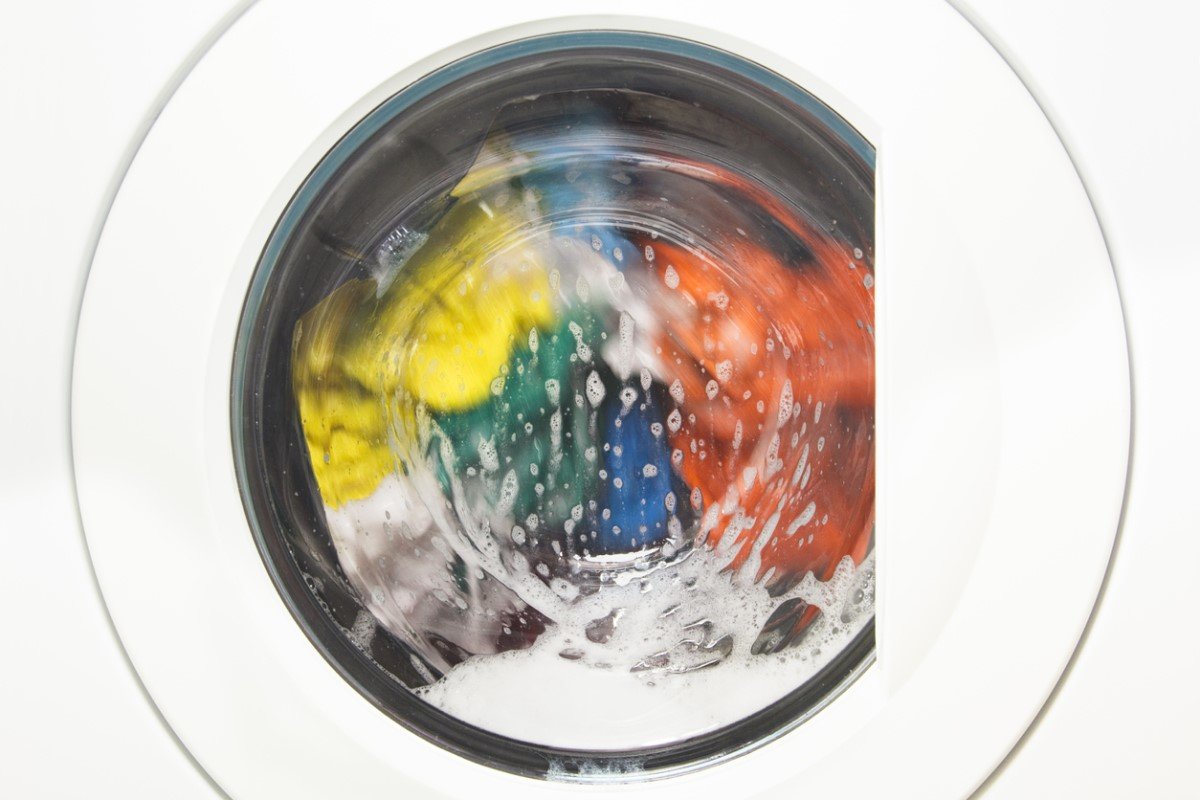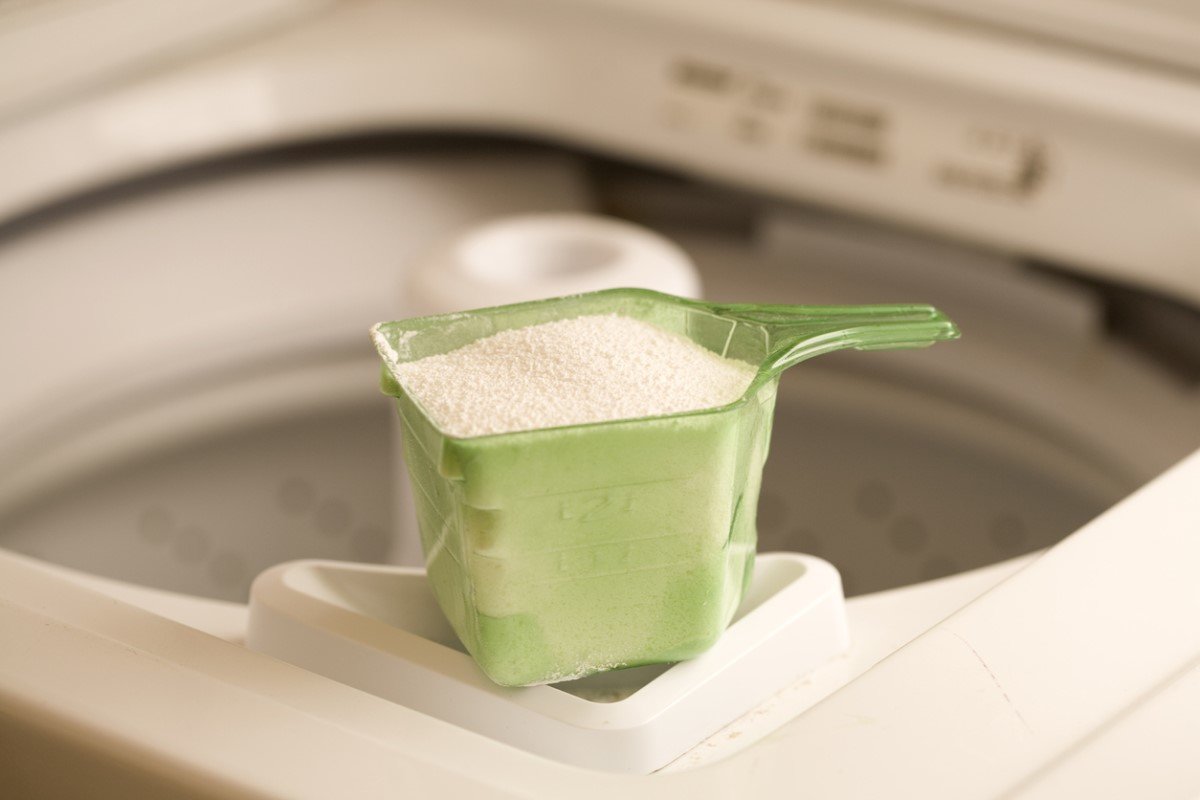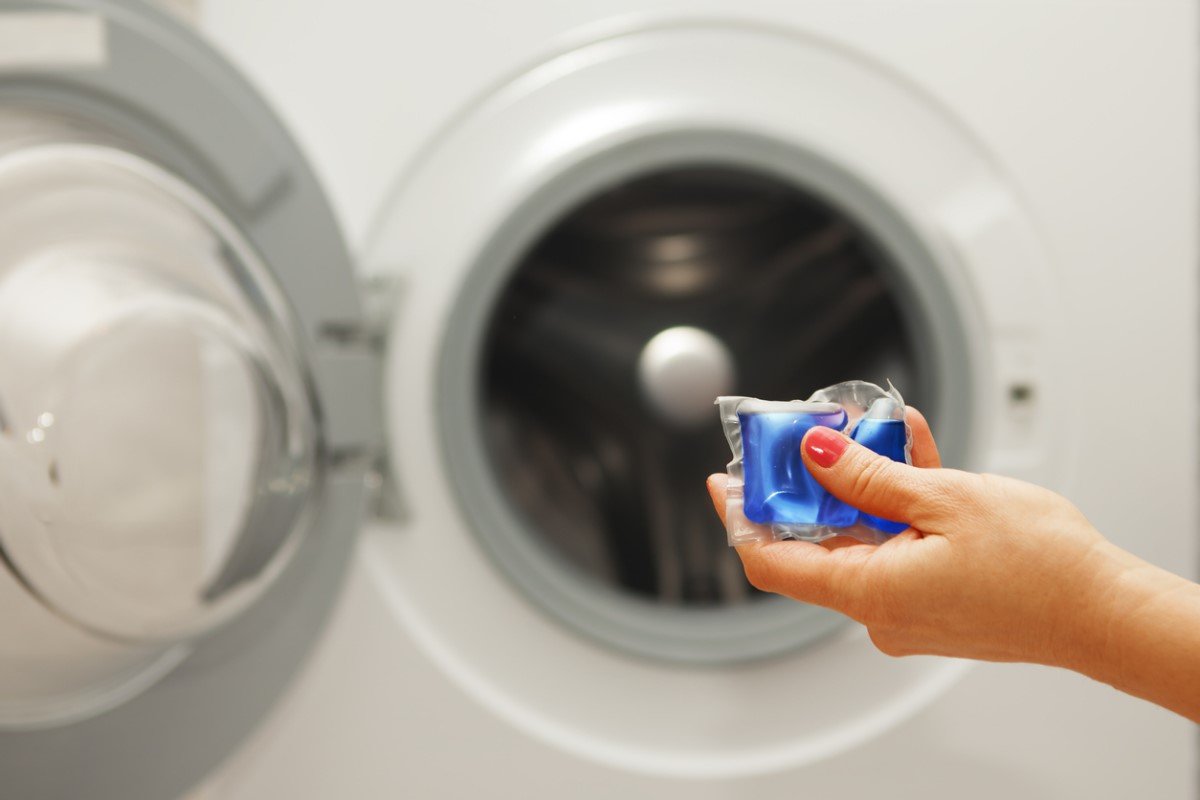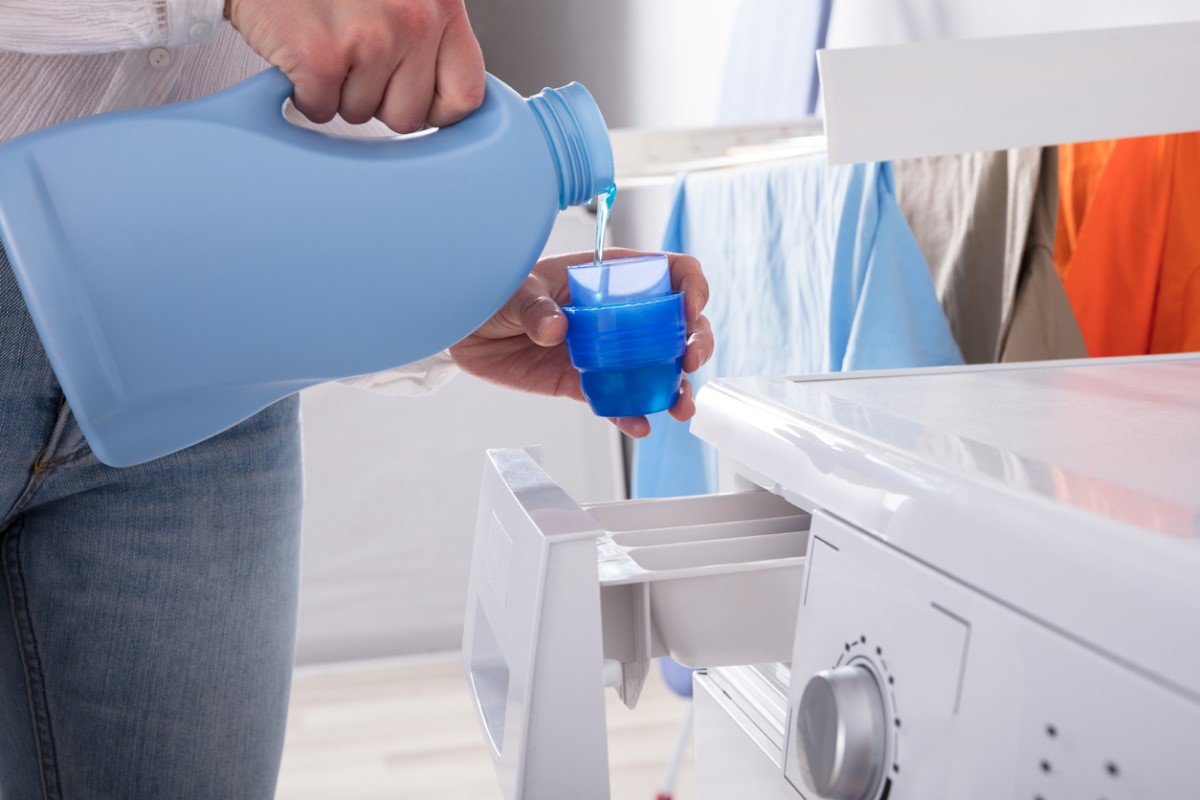

We may earn revenue from the products available on this page and participate in affiliate programs. Learn More ›
It’s a dirty job, but somebody’s got to do it! And if you’re the one on laundry duty, you’ll want some serious detergent to get those soiled clothes clean. With the help of water, and the rotation of the washer’s inner drum (in a front-load machine) or spindle-like agitator (in a top-load machine), detergent lifts dirt, stains, and odors away.
But when it comes to cost, convenience, and cleaning power, not all detergents are equal. The two main types, powder and liquid, are suitable for use in standard or high-efficiency top-load or front-load washers at any water temperature. So which should you choose? Ahead, we break down their differences with six key comparisons—liquid vs. powder detergent—to help you decide which is best for your family’s laundry.
RELATED: 19 Laundry Mistakes You’re Probably Making

Powder detergent is slightly cheaper.
Powder detergent will run you $0.10 to $0.24 per laundry load. The lack of liquid and the lightweight cardboard boxes used for packaging keep the product weight and transportation costs of powder detergent lower, translating to lower consumer costs. Because liquid detergent contains water and is sold in heavier plastic bottles, it’s more expensive to transport and for consumers to buy—$0.12 to $0.47 per load. While that may not sound like much, an average family that does 300 loads per year could annually save up to $70 by choosing powder over liquid detergent.

Powder detergent is more effective on mud stains; liquid detergent is better on grease stains.
Alkylbenzene sulfonate, the main surfactant (cleaning agent) in powder detergents such as Tide Original HE Turbo Powder ($12.95 per 95 oz. on Amazon), is generally more effective in lifting mud, grass, and bloodstains, which makes powder a great option for garden and athletic attire. In contrast, the alcohol ethoxylates in liquid detergents like Persil ProClean Power Original Liquid Detergent ($17.99 per 75 oz. on Amazon) easily break down grease stains from cooking oil to car grease, making liquid detergents a top choice for everyday wear.
Liquid detergent is better for stain pretreatment or hand washing.
Want to pretreat a stubborn stain on a shirt before throwing it in the washer, or perhaps hand wash it? While possible with powder detergent, you’ll first have to mix the powder with water to prepare a paste, then apply the paste to the stain before washing it. Not so with most liquid detergents, which you can apply directly to a stain. This is why Tide, which sells both powder and liquid detergent, recommends using liquid detergent for stain pretreatment and powder for deeper cleaning. Persil advises using liquid for small or large loads, quick washes in the washer, or hand washing, and recommends powders for large loads, as you can save a little bit of money because t powder is cheaper.

Liquid detergent is more convenient to use, especially in “pacs.”
Liquid detergent bottles usually come with a handle for easy transport, a twist-off cap that doubles a measuring cup, and a spout that enables splash-proof pouring into your washing machine. In contrast, powder detergent comes in a cumbersome box that doesn’t dispense as easily as liquid and requires you to pour it into a separate measuring cup, which can also be messy and wasteful if powder winds up on your hands or the floor.
Even more convenient than traditional liquid detergent are single-use laundry detergent “pacs” (also referred to as “pods,” Tide’s trademarked name), such as Gain flings ($19.99 for 81 pacs on Amazon). While more expensive ($0.17 to $0.50 per load), these small polyvinyl pouches contain concentrated laundry detergent and readily dissolve when placed in the drum of your washer. It’s a good option for busy folks who want to skip the steps of measuring and pouring.
Liquid detergent leaves less residue on clothes.
Both liquid and powder detergents contain fillers that help distribute active ingredients. The primary filler in liquid detergent being water, it dissolves easily at all water temperatures. This is important, because the more completely detergent dissolves in water, the more deeply it cleans and the less likely it is to build up in the washer and leave white residue on your clothes. In contrast, powder detergent usually gets its granular texture from the filler sodium sulphate, which tends to dissolve less readily, particularly in cold water, so it’s more likely to accumulate on clothes. If you regularly wash your clothes in cold water to prevent color fading and reduce energy costs, liquid detergent is a better choice.

Liquid detergent is safer for appliances.
Clumps of undissolved powder detergent in the washer can also clog your washer or septic system and cause a malfunction that calls for a plumber. Notably, powder can block the washer’s drain pump or the hose leading to the pump, and the washer may fail to drain. The fillers in powder detergent can also interact with liquids in your septic system to form solids that clog the system and prevent waste disposal, but choosing powders labeled “safe for septic systems” can reduce this risk. Because liquid detergent dissolves easily in water, it’s less likely to build up in your washer or clog septic systems, as long as you don’t exceed the recommended amount of detergent for each load.
